Willm Brut Prestige
-
Wine
Enthusiast -
Wilfred
Wong - Decanter



Product Details
Your Rating
Somm Note
Winemaker Notes
Special selected vineyards, old vines, and the harmony between the different varietals make this sparkler to our Prestige Crémant. Extended maturing allows the complexity and delicacy of the aromas to be full expressed. A personalized bottle has been designed for this high quality sparkler for the very special moments in life. Always made from the varietals classed AOC Crémant d'Alsace, the Crémant grapes are harvested before the other grapes in order to take advantage of their best balance and harmony. Produced according to the methode traditionnelle, Alsace Crémants are racked in a nearly inverted position where they age patiently. Then, after 12 months minimum, they are riddled or turned so that the sediment collects in the neck of the bottles, awaiting disgorgement.
Professional Ratings
-
Wine Enthusiast
The lightest of toffee aromas bolsters apple juice on the nose. The fragrance is intense and immediately autumnal, like a candy apple from a farm stand. The mousse is fine and plush, while the flavors are savory and angular. Wet slate and salinity mix with lime oil and Granny Smith peels. It's intensely palate cleansing and refreshing.
Editors' Choice -
Wilfred Wong of Wine.com
While the known wine world often puts champagne at the top of the sparkling category, Crémant d'Alsace can often match the stalwarts among the world's bubblies. The Willm Brut Prestige is an excellent wine. This wine shows great richness and balance. This wine exhibits aromas and flavors of aromatic and savory notes, a light creaminess, and a hint of oak. Enjoy it with a serving of just-shucked raw oysters. (Tasted: July 23, 2024, San Francisco, CA)
-
Decanter
Aromatic green fruit and herbal notes with a refreshing acidity. Mouthfilling with a long and savoury finish.

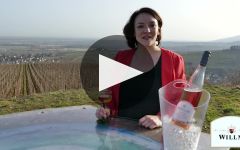
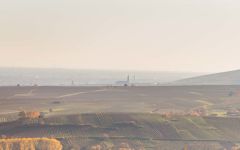
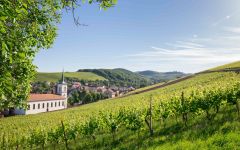
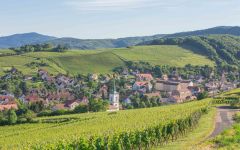
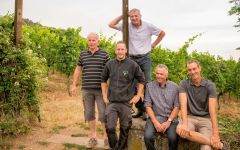
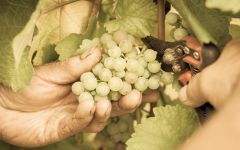
In 1896 the Willm family founded the Willm Estate in Barr, at the foot of the majestic Kirchberg de Barr Grand Cru vineyard. Willm has always been concerned with revealing the best of its terroirs and sharing its exceptional wines with the whole world. Thanks to the adventurous founder Emile Willm, the estate’s wines were the first from Alsace to be exported to the United States in the early 1930s, after prohibition laws were lifted. Their wines are celebrated for their blend freshness, minerality and elegance; they are synonymous with tradition, terroir, purity and refinement.
If Willm isn’t in an American history book, it should be. The winery was the first producer in Alsace to export to the United States after prohibition, and it’s said that Al Capone favored the wines after his release from Alcatraz. Though the Willm family has been making wine in Alsace since 1896, their French heritage dates back to 1398. Willm’s portfolio includes four Grand Crus, sparkling Cremant d’Alsace and late-harvest sweet wines, in addition to their reserve range. The winery is known for its easy-drinking, well-priced Riesling that pairs well with shellfish, grilled seafood and white meats. Among Alsace’s rarer sparklers is Willm’s Crémant d’Alsace Blanc de Noirs, a white bubbly made from 100% Pinot Noir. The vineyards span the Haut-Rhin (upper Rhine) and the Bas-Rhin (lower Rhine) in three locations, encompassing a diversity of soils and allowing Willm to produce a range of styles. The winery received its organic certification in 2012.

A term typically reserved for Champagne and Sparkling Wines, non-vintage or simply “NV” on a label indicates a blend of finished wines from different vintages (years of harvest). To make non-vintage Champagne, typically the current year’s harvest (in other words, the current vintage) forms the base of the blend. Finished wines from previous years, called “vins de reserve” are blended in at approximately 10-50% of the total volume in order to achieve the flavor, complexity, body and acidity for the desired house style. A tiny proportion of Champagnes are made from a single vintage.
There are also some very large production still wines that may not claim one particular vintage. This would be at the discretion of the winemaker’s goals for character of the final wine.

Small but mighty, this picturesque region in northeastern France is renowned for its white wines produced by passionate families whose winemaking roots span generations and even centuries. Nestled between the Vosges Mountains and the Rhine River, Alsace benefits from a sunny, dry climate and a long growing season. It is one of the most geologically diverse regions in the world — one of the many reasons why Alsace rocks!
Alsace wines include dry, mineral-driven Riesling, earthy Pinot Gris, refreshing Pinot Blanc, exuberant Gewurztraminer, elegant Pinot Noir, and more. From traditional-method sparkling wines to easy-drinking AOC Alsace, to complex Grand Cru bottlings from 51 distinct sites, and rich, late harvest wines, Alsace produces a wine for every occasion. Most Alsace wines are single-varietal bottlings and are labeled with the grape name. The region is also one of the greenest wine-producing areas in France, with 36% of its vineyard area certified organic.
Riesling, the region’s calling card, is dry, fresh and floral in its youth, developing complex mineral and flint character with age. Gewurztraminer is known for its signature spice and lychee aromatics. Pinot Gris is prized for its combination of crisp acidity and savory spice as well as ripe stone fruit flavors. Pinot Blanc is an affable food partner or porch sipper. Pinot Noir, the only red grape in AOC Alsace, is now authorized in three Grand Cru areas and is also used for Crémant d’Alsace sparkling rosé. Any bottle you choose will offer deliciousness, pleasure and value that is unprecedented in other wine regions.
